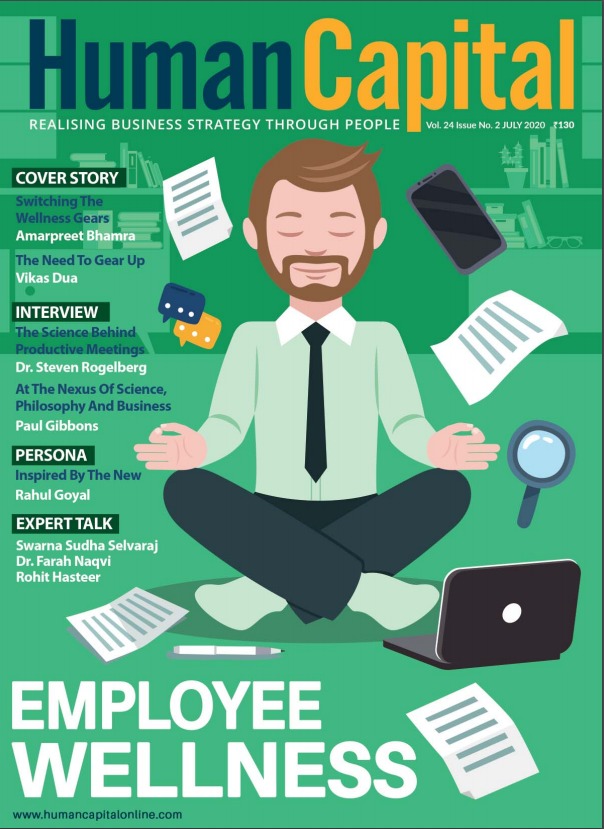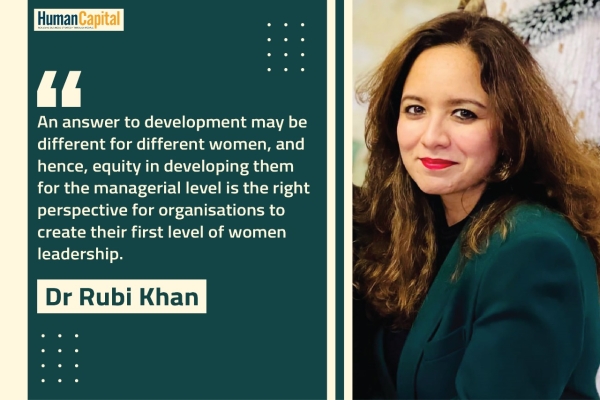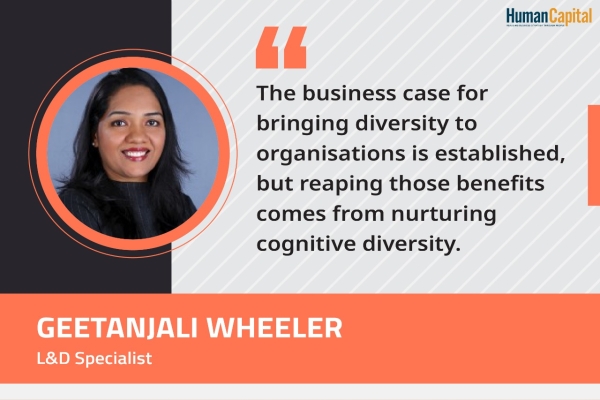The Invisible barrier of the glass ceiling which becomes a reality to organisations at the senior level can be traced at the very first opportunity of promotion missed by women.
Women in leadership are the focus in most organisations. There is a much talked about invisible glass ceiling and organisations are gearing up to break it. There is a need to take a step back and understand the “why” of fewer women at the senior leadership level. Organisations are solving the leadership pipeline. But, is this a solution? - Are they thinking right? Here and now? Sustainable? Long term?
Research says that for every 100 men promoted only 72 women are leading to women holding only 38% of managerial level positions (as opposed to men who hold 62%). This disparity for women in the path to leadership is referred to as the broken rung. McKinsey and Lean.in coined this term called ‘Broken Rung’, and as per their report on women in the workplace 2021, women continue to face the challenge of the Broken Rung.
Therefore, this invisible barrier of the glass ceiling which comes as a reality to organisations at the senior level can be traced at the very first opportunity of promotion missed by women. Fewer women in managerial roles will consequently lead to lesser women in leadership roles. This is a domino effect. Several organisations are significantly emphasising on promoting women at the top of the pipeline because for years there has been a continuous ask to focus on the glass ceiling and bring women to the centre.
However, the concentration should be more on career progression than on pipeline.
Critical Steps for Organisations to Follow
Emphasising on equity and not equality: Organisations thrive on providing a fair and safe ecosystem as also an environment by treating women equal with men. However, the need of the hour is equity. Equity calls for giving what an employee needs rather than what an organisation can offer. An organisation should thrive on equity which will enable women to build their career paths, create more visibility for them within the organisation, boost their confidence and build and groom the talent to take up their first promotion at a managerial level. An answer to development may be different for different women, and hence, equity in developing them for the managerial level is the right perspective for organisations to create their first level of women leadership.
Structured holistic developmental journeys: There is a huge emphasis on leadership development for women at the senior level. In order to fix the broken rung, we need to design sharp and focused programmes for building the managerial capability of women, and, these programmes should go beyond learning interventions. Holistic developmental journeys should consist of leadership, mentoring and sponsorship. Leadership mentoring and sponsorship will bring a lot of conviction among women employees and reinforce their empowering beliefs. This will also make them overcome their self-limiting beliefs and instil confidence to take up larger roles and stretched assignments within the organisation.
Identification of talent: Performance assessment also plays a pivotal role in assessing and identifying talent. Research says that men are assessed on potential whereas women are assessed on what they have already achieved. Only 65% of companies track promotion rates by gender. Since 2019, the number of companies implementing best practices to reduce bias in hiring and performance reviews has increased significantly. This is the step in the right directionbut there is a sizeable gap between the share of companies that apply certain best practices to hiring and those that apply the same practices to reviews. There is a need to have an unbiased performance review. Talent has to be viewed as talent irrespective of gender.
Building an inclusive workplace: Diversity is all about hiring employees from different backgrounds and identities, but to sustain diversity and make it successful inclusiveness is a way forward. An Inclusive workplace creates a safe and unbiased culture for employees. The stepping stone to creating an inclusive workplace is the commitment of the senior leadership team and owning the diversity, equity and inclusion agenda by participating across the organisation. The leaders are accountable for all the diversity and inclusion metrics.
A woman’s experiences at the workplace are shaped by her interactions with her supervisor, colleagues and the leadership team. Hence, it means that an organisation needs to sensitise employees at all levels towards inclusion. Employees should understand the barriers faced by women, unconscious bias and its repercussions. There should be a mandatory programme for all employees making them aware of unconscious bias during hiring and performance reviews. An Inclusive workplace can consist of a listening post, sounding board, having thoughtprovoking speakers and encouraging employees to openly share their experiences and ideas for progressing on the path of DEI.
Embedding DEI as a part of the overall organisational culture: It all depends where DEI is fitting as a priority for the organisation. For several organisations, it is a part of the compliance and regulatory framework, whereas, for others, it is ingrained in the values of the organisation and coherent to the culture. It is inevitable to have a strong leader’s sponsorship and belief in DEI to culminate it into the organisational way of life. At a macro level, the policies and framework of companies around maternal, paternal, returning mother, sabbatical should be very strong to ensure that women feel empowered at the workplace. Organisations should clearly articulate what is expected of employees and what it means to have an inclusive culture. A good start may be embedding this thinking into the company’s values specifying behaviours and actions that promote an inclusive culture.
Challenges for women are different at the workplace and COVID-19 and its impact- the burnout, stress and juggling between work and life had made it no better. In all this, companies identify the problem of the glass ceiling at the leadership level. However, its trenches are rooted at the early start of the career where women aspire to take their first promotion and hit a roadblock.
It is pertinent to solve for making women an early leader to ensure that we build a robust talent pipeline for the board room at the workplace. An initial broken rung may shake a belief of a woman to move up the ladder and believe in her own potential as a leader.
If companies solve for today’s early women leaders, they will have umpteen future women leaders to bring in diversity at the workplace. Let us fix the broken rung and the invisible glass ceiling shall break!
Do you look forward to permanently working from home after the pandemic subsides?
Trending
-
SBI General Insurance Launches Digital Health Campaign
-
CredR Rolls Out 'Life Happens' Leave For Its Employees
-
Meesho Announces 30-Week Gender-Neutral Parental Leave Policy
-
Microsoft Unveils Tech Resilience Curriculum To Foster An Inclusive Future
-
60% Indian Professionals Looking For Job Change Due To COVID: Survey
-
SpringPeople And Siemens Collaborate For Digital Transformation Push
-
86% Professionals Believe Hybrid Work Is Essential For Work Life Balance: Report
-
Almost 1 In Every 3 People's Personal Life Affected Due To Work Stress
-
Meesho Rolls Out Reset And Recharge Policy For Employees
-
80% Of Talent Leaders & Academics Say Pandemic Changed Skill Needs For Youth: Report
-
Hero Electric Rolls Out 'Hero Care' Program For Employees
-
Human Capital In Collaboration With ASSOCHAM Hosts Virtual Conference
-
IKEA India, Tata STRIVE Collaborate To Create Employability And Entrepreneurship Opportunities
-
SAP India, Microsoft Launch Tech Skilling Program for Young Women
-
DXC Technology, NASSCOM Collaborate For Employability Skills Program
-
Lenskart To Hire Over 2000 Employees Across India By 2022
-
Mindtree Launches Learn-and-Earn Program
-
Tata AIA Extends 'Raksha Ka Teeka' To Its Employees
-
Swadesh Behera Is The New CPO Of Titan
-
NetConnect Global Plans To Recruit 5000 Tech Professionals In India
-
Hubhopper Plans To Hire 60% Of Indian Podcasters By 2022
-
Corporate India Needs More Women In Leadership Roles: Report
-
Aon to Invest $30 Million and Create 10,000 Apprenticeships by 2030
-
Tech Mahindra Launches ‘Gift a Career’ Initiative for Upskilling of Youth
-
40% Women Prefer Flexible Working Options in Post-COVID World: Survey
-
3 out of 4 companies believe they can effectively hire employees virtually: Report
-
Vodafone , CGI and NASSCOM Foundation launch digital skills platform
-
Odisha: Bank, postal employees to deliver cash for elderly, differently-abled persons
-
Skill India launches AI-based digital platform for "Skilled Workforce"
-
Hiring activity declines 6.73% in first quarter: Survey
-
70% startups impacted by COVID-19 pandemic
-
Bajaj Allianz Life ropes in Santanu Banerjee as CHRO
-
Over 70 Percent MSMEs look at cutting jobs to sustain businesses
-
93 Per Cent employees stressed about returning to office post-lockdown
-
Johnson & Johnson India announces family benefits for same gender partners
-
Indian firms turning friendly towards working mothers
-
Welspun India names Rajendra Mehta as new CHRO
-
Wipro partners with NASSCOM to launch Future Skills platform



Human Capital is niche media organisation for HR and Corporate. Our aim is to create an outstanding user experience for all our clients, readers, employers and employees through inspiring, industry-leading content pieces in the form of case studies, analysis, expert reports, authored articles and blogs. We cover topics such as talent acquisition, learning and development, diversity and inclusion, leadership, compensation, recruitment and many more.
Subscribe Now












































Comment